
Scan QR code
Uniaxial Geogrid is a type of plastic geogrid, which is a square or rectangular polymer network formed by stretching. It can be unidirectional or bidirectional according to the stretching direction during manufacturing. It is made by punching holes in extruded polymer sheets (mostly made of polypropylene or high-density polyethylene) and then conducting directional stretching under heating conditions. Unidirectional stretching is carried out along the length of the sheet, which allows the polymer to form a rectangular elliptical network structure with uniform distribution and high node strength in a straight state.
Width: 1-6 M
Material: HDPE/PP
Customization:
The width, tension, etc. can be customized according to customer requirements.
Function:
Strengthening weak foundations with reinforced asphalt or cement pavement to reinforce embankments and retaining walls
Strengthening river and sea embankments to treat landfill sites
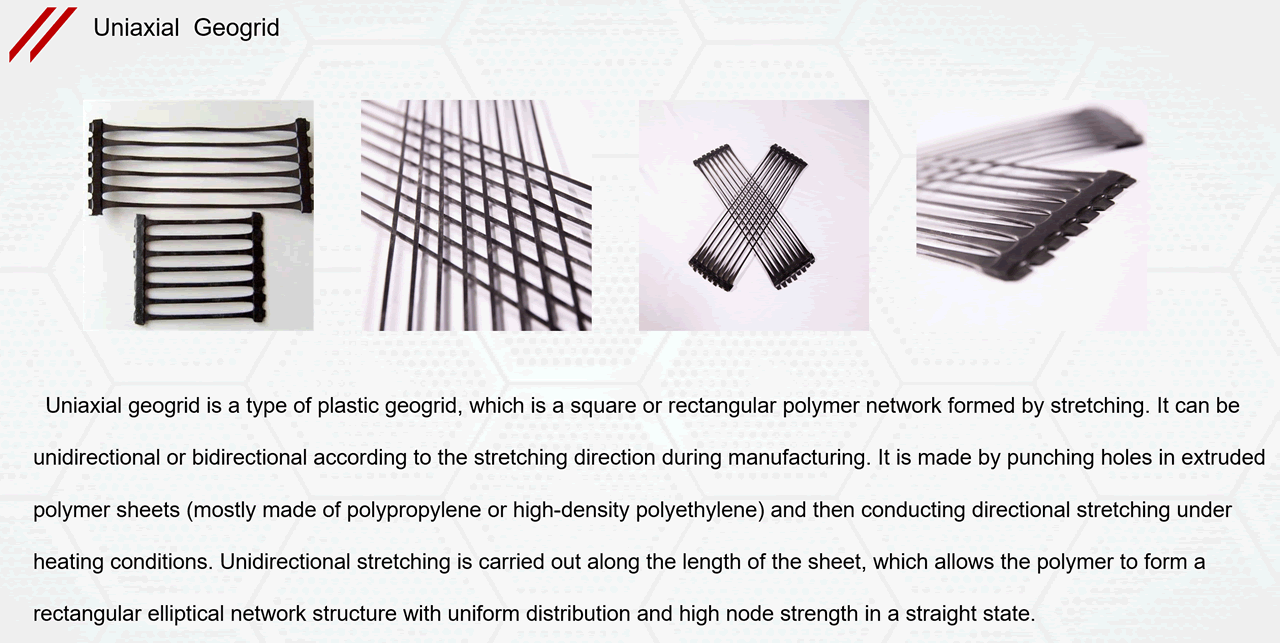
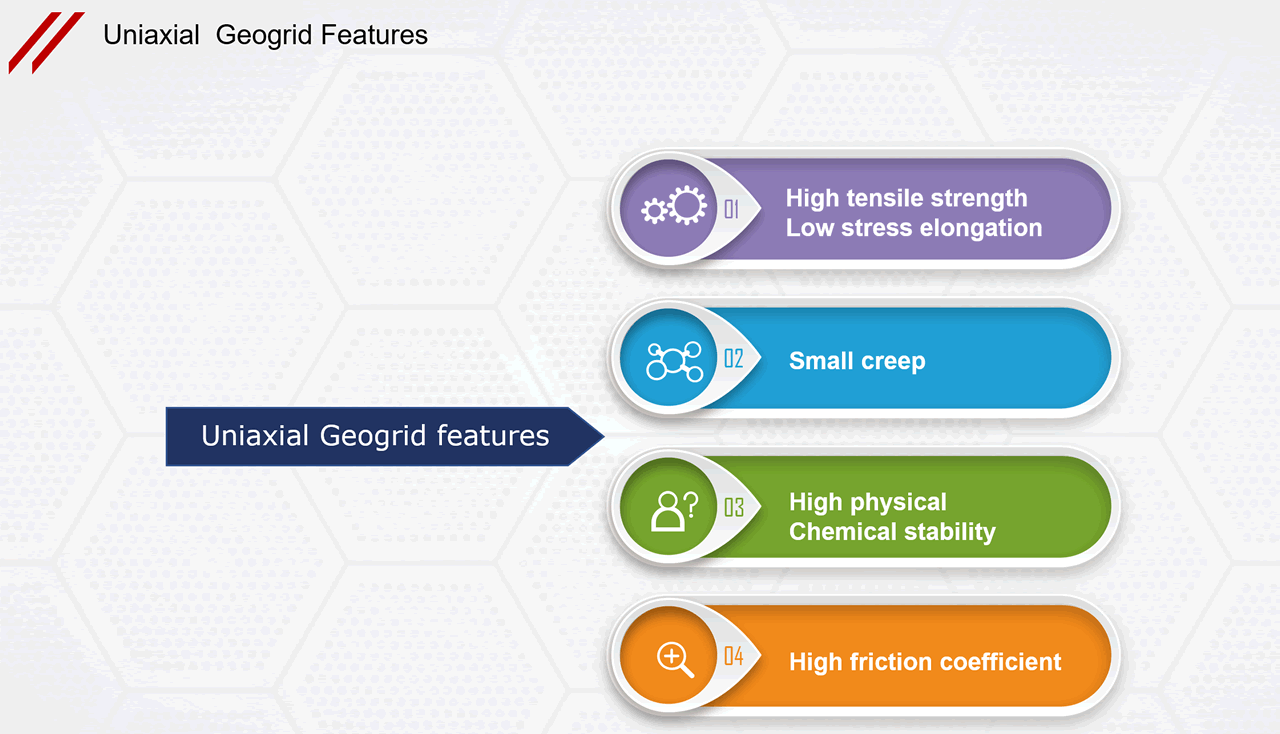
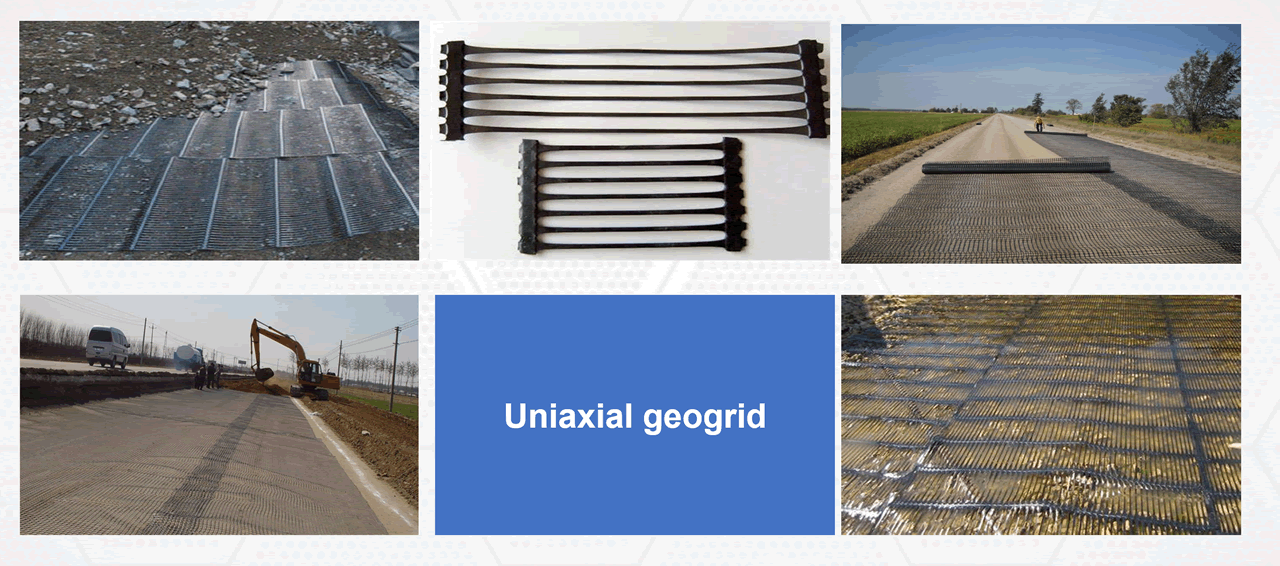
Performance indicators of Uniaxial PP geogrid | |||||||||||
Specification Items | TGDG25 | TGDG35 | TGDG50 | TGDG80 | TGDG110 | TGDG120 | TGDG16 0 | TGDG20 0 | TGDG22 0 | TGDG260 | TGDG300 |
width of cloth(m) | 1~6 | ||||||||||
Tensile strength≥(kNm) | 25 | 35 | 50 | 80 | 110 | 120 | 160 | 200 | 220 | 260 | 300 |
Nominal elongation≤(%) | 10 | ||||||||||
2% Tensile strength at elongation≥(kNm) | 7 | 10 | 12 | 26 | 32 | 36 | 45 | 56 | 80 | 94 | 120 |
5% Tensile strength at elongation ≥(kN/m) | 14 | 22 | 28 | 48 | 64 | 72 | 90 | 112 | 156 | 185 | 220 |
Performance indicators of Uniaxial HDPE geogrid | |||||||||||||
Specification Items | TGDG35 | TGDG50 | TGDG65 | TGDG80 | TGDG90 | TGDG110 | TGDG120 | TGDG130 | TGDG160 | TGDG170 | TGDG200 | TGDG220 | TGDG260 |
Width of cloth( m) | 1~6 | ||||||||||||
Tensile strength ≥ ( kNm) | 35 | 50 | 65 | 80 | 90 | 110 | 120 | 130 | 160 | 170 | 200 | 220 | 260 |
Nominal elongation ≤(%) | 11.5 | ||||||||||||
2% Tensile strength at elongation ≥(kNm) | 7.5 | 12 | 16.1 | 21 | 23.7 | 29.9 | 33 | 38 | 47 | 52.5 | 60 | 68 | 80 |
5% Tensile strength at elongation ≥(kN/m) | 21.5 | 23 | 30.9 | 40 | 45.2 | 56.5 | 65 | 75. 5 | 93 | 103 | 110 | 125 | 150 |
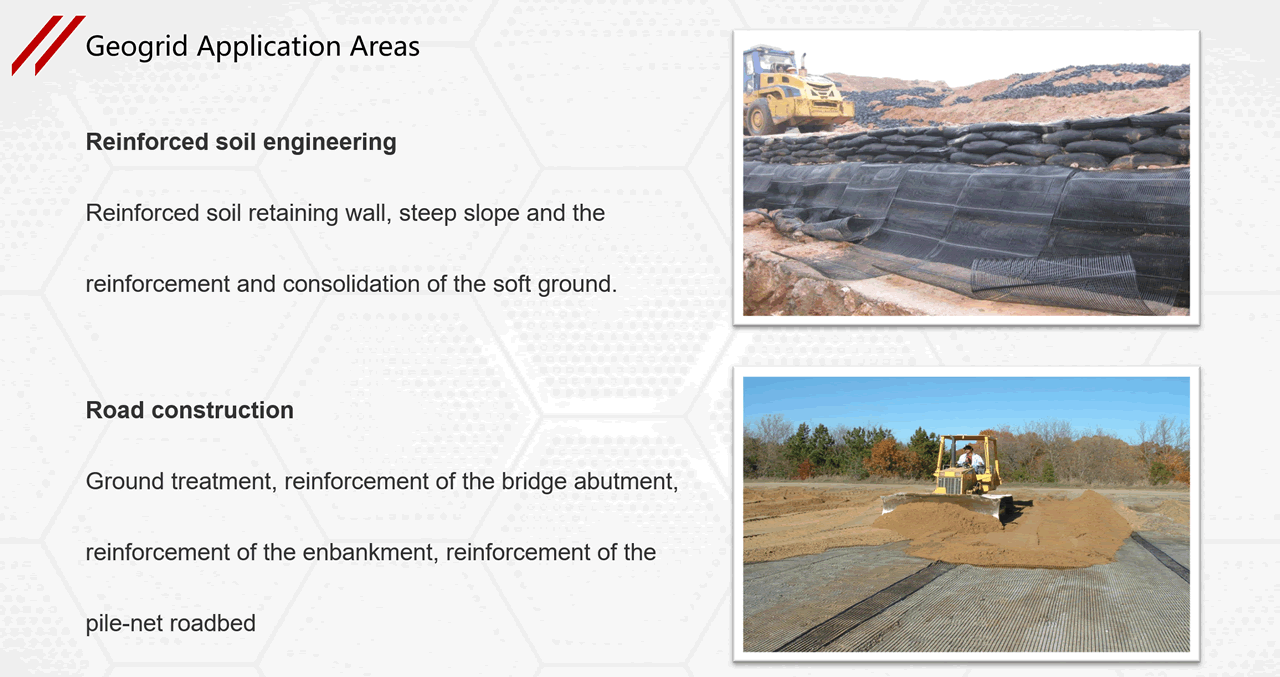
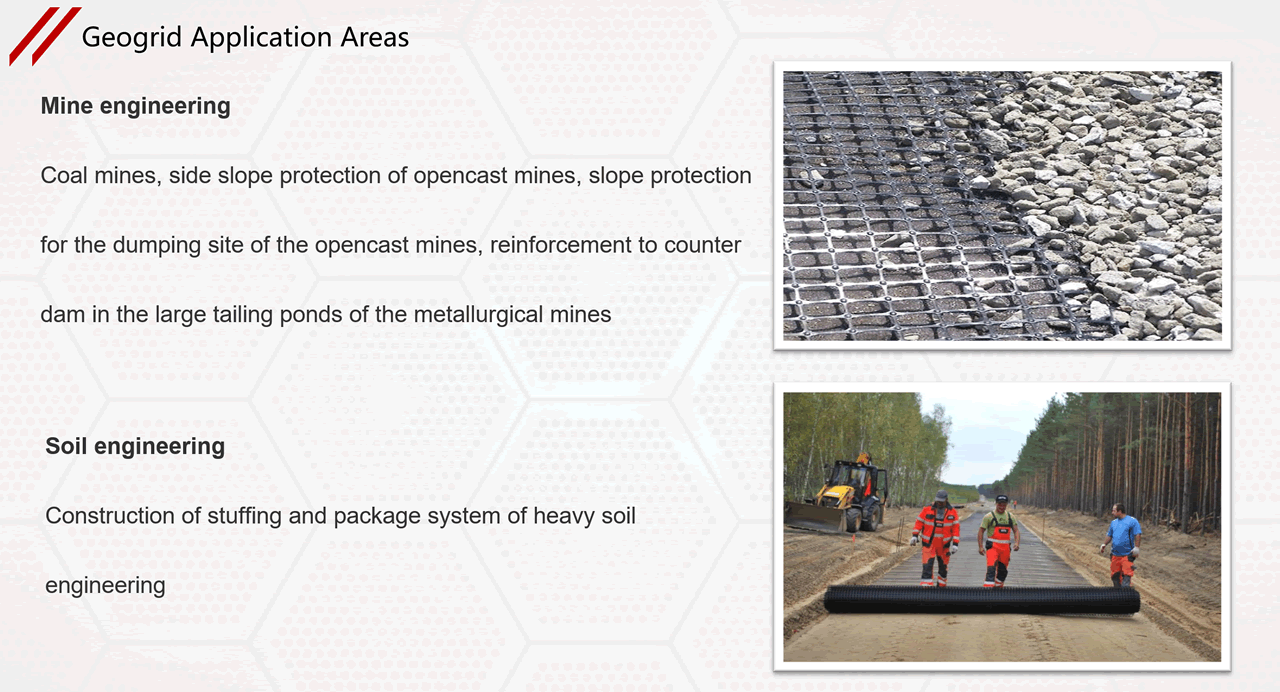
1. Construction site:
It is required to compact, level, and remove sharp protrusions.
2. Grid laying:
On a flat and compacted site, the main force direction (longitudinal) of the installed and laid grid should be perpendicular to the axis of the embankment. The laying should be flat, without wrinkles, and should be as tight as possible. Fix with insertion nails and earth and rock pressure.
3. Selection of fillers:
Fillers should be selected according to design requirements. Gravel soil and sand soil have stable mechanical properties and are less affected by water content, so they should be preferred. The particle size of the filler shall not exceed 15cm, and attention shall be paid to controlling the grading of the filler to ensure the compaction weight.
4. Spreading and compacting of fillers:
After the grid is laid and positioned, it should be filled with soil and covered in a timely manner. The exposure time should not exceed 48 hours, and a flow process method of backfilling while laying can also be adopted. First spread the filler at both ends, fix the grille, and then push it towards the middle.
5. Waterproof and drainage measures:
In reinforced soil engineering, it is necessary to carry out drainage treatment both inside and outside the wall; To protect feet and prevent erosion; Filter and drainage measures should be set up inside the soil, and if necessary, geotextile and permeable pipes (or blind ditches) should be installed. Drainage should be carried out in a dredging manner and should not be blocked, otherwise hidden dangers may arise.
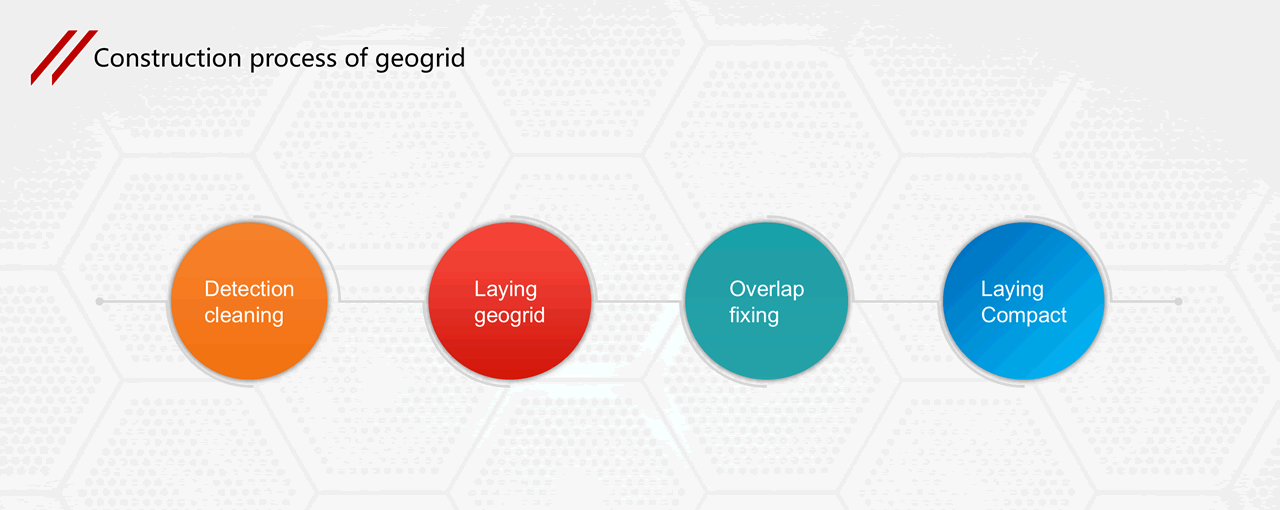
Previous : Fiberglass geogrid
Next:Biaxial geogrid
Hot Keywords:GeocellGeogridGeotexileGeocompositeGeomatGeomembrance